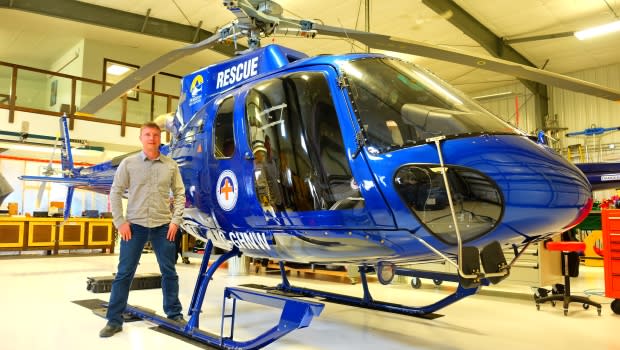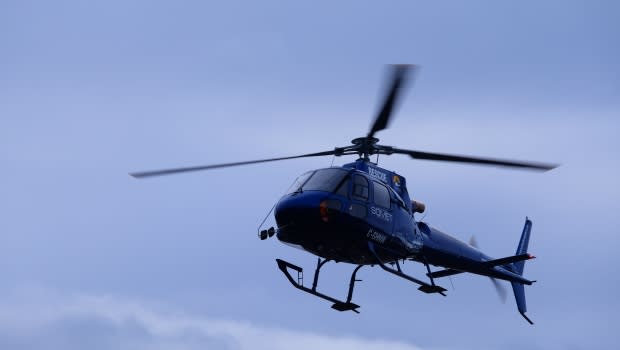New high-altitude rescue helicopter ready to save lives in Yukon
Performing air rescues on Mount Logan — Canada's highest peak — is never easy.
But a Whitehorse company has a new aircraft that could make such high-altitude rescues safer.
Horizon Helicopters' new Airbus AS350-B3e is based at its Whitehorse hangar. It's there to assist in mountain rescues in Kluane National Park.
"This is just going to give us as the pilots, and the parks people, and the people who are rescued ... more power at those altitudes, which can make it safer for everybody," said Cole Hodinski, operations manager and chief pilot for Horizon Helicopters.
Last year, Quebec mountain climber Monique Richard was the first woman to reach the summit of Mount Logan in a solo trek, but she was forced to call for help on her descent. Horizon Helicopters was part of the team that successfully executed the high-altitude rescue, at about 5,500 metres, using an older model Airbus AS-350.
The company's new helicopter is certified for altitudes higher than 7,000 metres — or more than 1,000 metres higher than the summit of Mount Logan.
"A number of years ago, Airbus did a record-setting landing on top of [Mount] Everest, just to give you an idea of how high they have taken it," said Hodinski.
The peak of Everest is about 8,848 metres.
"This particular machine, compared to the one that landed on Everest, has more horsepower and a number of other [modifications] that help improve the performance at altitude," said Hodinski.
Horizon Helicopters isn't the only company in Yukon with helicopters that can do mountain rescues, but according to Airbus, the AS350-B3e is a newer model with more power and other modifications to help it better perform at high altitude.

Hodinski says the helicopter has sophisticated computers that adjust the flow of oxygen according to the altitude, for the pilot and passengers. Specialized software helps keep the craft level in high mountain winds.
The craft also has a rescue Helicopter External Transport System (HETS), and enough horsepower to safely lift a person at high elevations, using a long line.
Thin air
Most helicopters don't have the power to climb in the lower-density air found at higher altitudes. Pilots have to constantly calculate air pressure and temperature, and in some cases do it while wearing an oxygen mask.
"The biggest challenge from Mount Logan is the weather and the remoteness. It feels like being on the moon," said Hodinski.
"It's big, it's a long way away, and it is a really, really large mountain. It makes you feel really insignificant and small."
He says the new lightweight helicopter has features that allow it to almost defy gravity, including a fast fin on the tail boom. That's a new technological performance modification on the aircraft.

"If you look at the tail boom, you can definitely see the bulge on this side. The idea of this fast fin is, it uses the 'Coanda effect,' which in layman terms, it turns it into a wing."
That means less power is needed at the craft's tail rotor and more power can be used for the main rotor, especially in cross winds and for heavy lifting.
The machine will be used for training with pilots in Kluane National Park this week.

